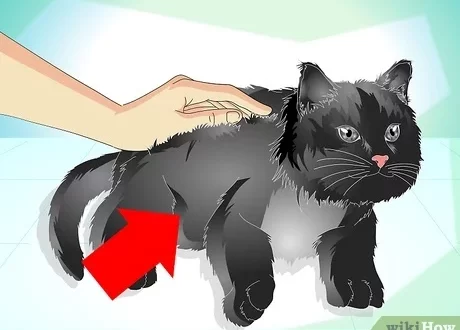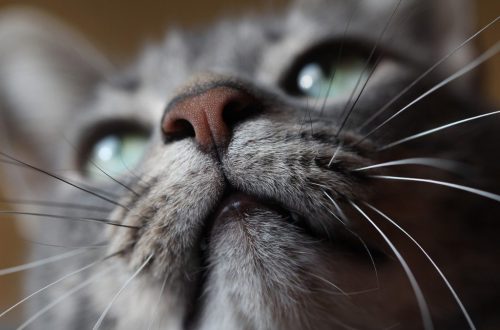
The whole truth about autumn leaves, antifreeze and rabies
Veterinarian Boris Mats talks about the autumn diseases of pets and shares cases from practice.
Mac Boris Vladimirovich — ветеринарный врач и терапевт клиники «Спутник». Прошел 4-х месячную стажировку в отделении хирургии в Учебном Ветеринарном Госпитале при Еврейском Университете в Израиле.
On October 19, Boris held a webinar on SharPei Online about seasonal problems in dogs and cats. He told whether the health of a pet depends on the length of daylight hours, about seasonal respiratory diseases, about whether puddles, reagent and antifreeze are dangerous, and much more. If you managed to listen to the webinar and ask your questions, you are really lucky! Well, if not, catch the interview: we tried to keep the most important recommendations.
- Tell us, please, what problems are most often addressed to veterinary clinics in autumn?
 – The most frequent, especially in early autumn, is respiratory disease in dogs. Most often, this is the so-called “kennel cough” – a group of respiratory diseases caused by various viruses and bacteria. Compared to people, you can call it a seasonal cold.
– The most frequent, especially in early autumn, is respiratory disease in dogs. Most often, this is the so-called “kennel cough” – a group of respiratory diseases caused by various viruses and bacteria. Compared to people, you can call it a seasonal cold.
As in humans, these diseases usually go away on their own in 7-10 days and do not require specific treatment. However, in any case, you need to be under the supervision of your veterinarian. There are several reasons for this:
more dangerous factors, such as pneumonia, may be the cause of the symptoms. In this case, as a rule, antibiotic therapy is necessary, and sometimes hospitalization.
high danger for puppies. They develop complications very quickly.
Therefore, in any case, you must consult a doctor. He will tell you what to do next, select the necessary diagnostic and therapeutic plans in order to prevent complications and help the pet in a timely manner.
The second fairly common disease in the fall is babesiosisaka piroplasmosis. It is caused by parasites from the genus Babesia. These small organisms enter the animal’s bloodstream and destroy red cells (erythrocytes). Red blood cells carry oxygen to all organs and tissues of animals. Without oxygen, the animal dies in much the same way as with suffocation. It is usually transmitted by ixodid ticks (the main route of transmission), but can also be transmitted directly from dog to dog. Cats can also carry babesia, but clinical manifestations almost never occur.
The main protection of animals from babesiosis is treatment against ixodid ticks. Many people think that treatments are only needed in the summer. But they are needed all year round. Especially in the warm season, when the temperature is above 0 degrees. Because ixodid ticks can always be found when there are “plus” temperatures outside.
I want to note that in recent years, fewer and fewer dogs have begun to deal with this problem. This suggests that owners are becoming more competent in caring for animals – this is a wonderful trend.
- Can you tell us about the most memorable case from your veterinary practice this fall?
– There was one. It happens that veterinarians pay special attention to any pathology and begin to wait for a patient with this problem.
In September, a dog came, 1 year old. She was diagnosed with babesiosis 1 month prior to admission and treated appropriately at an external clinic. Everything was done correctly, but the dog did not get better. She was lethargic and her appetite was reduced. Shortly before the reception, vomiting occurred.
A mysterious situation, because the clinical picture is not very similar to babesiosis. The symptoms are extremely non-specific, and nothing serious was found on examination.
In such cases, routine examinations are usually prescribed:
complete blood count – shows whether there is anemia and whether there is inflammation
biochemical blood test – shows functional disorders of internal organs
blood electrolytes – shows a violation of their metabolism and loss.
I ran these tests and found electrolyte disturbances consistent with Addison’s disease. This is a disease of the adrenal glands that reduces the production of cortisol. Of course, to assert that the dog has this diagnosis, only this indicator is not enough, especially since the violation was insignificant. For the final diagnosis, specific tests are carried out, but this requires a good reason. Therefore, I also took blood cortisol – it turned out that it was lowered. After that, Addison’s disease became the leading, but not the final diagnosis, and the dog was referred to an endocrinologist.
Later I found out that the diagnosis was confirmed. Unfortunately, often the treatment of this disease is quite difficult and not always successful.
- Is it true that autumn leaves and acorns can be dangerous for a dog?
Yes and no at the same time. As one of the greats said: “Anything can be a poison and everything can be a medicine”, a question of dosage”. If you wish, you can die from water.
The leaves themselves are not likely to be a problem for the animal. Only if you do not eat a kilo of urban autumn leaves, as there may be salts of heavy metals! However, under the thick leaf litter, there can be various dangerous objects that can cause injury to the pet or poison it. Or cause an obstruction in the esophagus or intestines.
To avoid such troubles, walk in familiar places where there is little foliage and relatively understandable people and animals. Such simple rules can save you from many problems.
If, nevertheless, trouble happened – the animal ate something or got hurt – immediately contact your veterinarian to put the process under control. Of particular danger are injuries to the chest cavity, antifreeze poisoning, food poisoning with isoniazid and other synthetic substances that are toxic to animals.
A little bit about acorns. Они могут быть дважды опасными. Опять-таки дело количества. Вряд ли что-то случится с алабаем от 5 желудей, а вот той-терьер от 3-5 желудей может пострадать. Первая опасность – риск развития непроходимости. Желудь может застрять в пищеварительном тракте, что вызовет неприятные последствия вплоть до перитонита или плеврита.
The second danger is the toxicity of acorns. They can cause not only signs of poisoning (vomiting and diarrhea), but also contribute to the development of gastrointestinal bleeding.
Pretty much the same story with chestnuts – another autumn fruit. Everything is the same here as in the acorn, only more chances of developing obstruction due to size and less chance of gastrointestinal bleeding due to a different chemical composition of these plants.
- КWhat fall dangers do you think are the most serious?
– Looking for someone. For apartment pets or animals that spend most of their time outdoors. For dogs or cats.
What unites them all is viral and bacterial diseases that can be contracted both through direct contact with other animals and through everyday life. If, for example, pathogens were brought into the house on clothes or shoes.
Vaccines have been developed for more dangerous diseases. Depending on what kind of animal you have and what kind of lifestyle it has, the veterinarian will suggest the appropriate vaccination schedule. That which is invariable for all and must be carried out annually – rabies.
RF absolutely disgusting situation on this disease. Even in Moscow, different areas are quarantined every quarter. Let me remind you that rabies is a disease that, among other things, is extremely dangerous for humans.
You need to understand that if you or your animal shows signs of rabies, there is no escape.
If an animal can be subjected to humane euthanasia, then a person is forced to die in suffering for days and weeks.
Separately, I would like to highlight such a danger as antifreeze poisoning. The insidiousness of this liquid is that its taste is attractive to animals, and the symptoms of poisoning develop very rapidly. Without assistance, many organs are affected and death occurs.
Эффект после выпивания наступает уже через 30 минут. При том для кошек антифриз опаснее, чем для собак. То есть из расчета мл/кг кошке нужно меньше, чем собаке.
You need to watch what your pet does on the street. Do not allow him to drink liquids from unfamiliar or questionable sources and wean animals from childhood to pick up something on the street without permission. If your animal is not well-mannered or is still too small, use muzzles. Cage muzzles are best suited: they do not squeeze the muzzle and allow you to breathe normally.
- Give 3 main recommendations to dog owners: how to protect a pet in the fall?
– These tips will be some summary of all of the above.
Regularly and year-round treat your dog for ixodid ticks. They carry not only babesia, but also other dangerous parasites. And the more likely we are to meet these parasites, the further south we move across Russia. We remember that Khabarovsk, Gorno-Altaisk and Volgograd are approximately at the same latitude – and all this is the South.
Проводите регулярную вакцинацию в зависимости от образа жизни вашего питомца. Например, если ваша собака охотится, много времени проводит в лесах, необходимо вакцинироваться от лептоспироза каждые 6 месяцев. А если ваша кошка гуляет, то необходимо вакцинировать ее от вирусного лейкоза кошек. Различных схем масса и нужно это обсуждать с вашим доктором.
Do not allow your animal to eat anything outside. Everything can be fine the first time, the second, the third, and the fourth your pet is already in intensive care with poisoning with Isoniazid or antifreeze. And it’s good if after resuscitation he goes home, and not to the crematorium.





